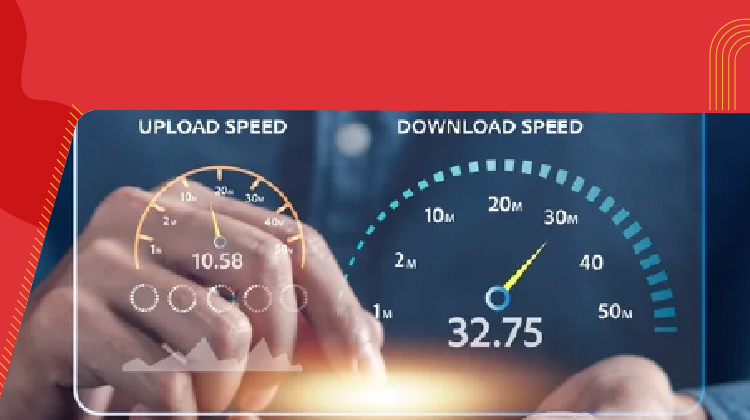What Are the Future Trends in Air Fiber Technology?
Tuesday, Feb 11, 2025 · 4 minutes


WHAT ARE THE FUTURE TRENDS IN AIR FIBER TECHNOLOGY?
Tuesday, Feb 11, 2025 · 4 minutes
AirFiber technology, which offers incredibly fast, wireless communication over great distances, is revolutionizing how we access the internet. It is perfect for underserved and isolated places because it does not require standard wired infrastructure. AirFiber constantly evolves with new technological developments, spectrum utilization, and deployment tactics in response to the growing need for dependable and fast internet. According to emerging trends, AirFiber is expected to be essential in closing the digital divide and enabling next-generation technologies like 5G.
This article will discuss future developments in AirFiber technology, including airfiber plans, airfiber price, the various ACT broadband internet plans, and methods of providing high-speed internet.
AirFiber services are typically offered by internet service providers (ISPs) with varying plans based on speed, data limits, and customer needs. The pricing options in India (INR) range from affordable basic packages to premium, high-speed plans designed for businesses and enterprises.
Popular AirFiber Plans and Pricing (Indicative):
| Plan | Speed | Data Limit | Price (INR) | Ideal For |
| Basic Plan | Up to 50 Mbps | 500 GB/month | ₹999/month | Home users, browsing, streaming |
| Standard Plan | Up to 100 Mbps | 1 TB/month | ₹1,499/month | Streaming, gaming, remote work |
| Premium Plan | Up to 200 Mbps | Unlimited | ₹2,499/month | Small businesses, heavy users |
| Enterprise Plan | Up to 1 Gbps | Unlimited | ₹5,999/month | Large businesses, critical operations |
Key Factors Influencing AirFiber Pricing:
Since its inception as slow dial-up connections, wireless broadband has advanced significantly to include high-speed airFiber networks today. Recognizing this development makes it easier to see the innovations that make airFiber so revolutionary.
1. The Early Days: Dial-Up and Wi-Fi
Dial-up connections were used for the first internet access methods, with speeds of only a few Kbps. With the advent of Wi-Fi, wireless networking in homes and workplaces became possible, marking a major advancement. Wi-Fi and basic cellular networks (2G) dominated wireless communication in the late 1990s and early 2000s.
2. 3G and 4G Revolution
Mobile internet was revolutionized by introducing 3G and 4G networks, which offered faster speeds and wider coverage. These developments allowed wireless internet to rival more established wired options.
3. Emergence of AirFiber
AirFiber technology revolutionized wireless broadband, which offers gigabit-level speeds over extended distances. AirFiber uses millimeter-wave frequencies to establish point-to-point (P2P) links, unlike Wi-Fi's short-range connectivity limitations. Today, there are many ACT broadband internet plans to choose from.
4. Integration with 5G
The most recent development is improving both technologies by combining 5G networks with airFiber. AirFiber functions as a backhaul solution, offering the infrastructure required to meet the high-speed and low-latency demands of 5G communications.
AirFiber offers high-speed internet that frequently matches or surpasses that of conventional fiber-optic connections. Depending on the network setup and plan, the speed at which AirFiber systems can operate can reach 1 Gbps or higher. You can also undertake an airfiber speed test.
Factors Contributing to AirFiber’s High Speeds:
Future Trends in AirFiber Technology
As airFiber technology continues to evolve, several key trends are shaping its future:
1. Expansion of Coverage Areas
By utilizing airFiber's affordability to close the digital divide, providers are concentrating on extending their reach to underserved and rural areas. Private investments and government programs are speeding up this expansion.
2. Integration with 5G and Beyond
AirFiber is becoming more popular as a backhaul option for 5G networks. Future networks like 6G are anticipated to rely even more on airFiber for high-capacity, low-latency connectivity.
3. Enhanced Security Features
AirFiber systems implement sophisticated encryption and authentication methods as cyber threats change to safeguard data and guarantee secure communication.
4. Smart Antenna Technology
More effective spectrum use is made possible by advancements in antenna design, such as beamforming and phased arrays, which increase signal quality and range.
5. AI and Automation in Network Management
AirFiber networks use artificial intelligence (AI) through automated network management to enhance user experiences, predict maintenance needs, and perform optimally.
6. Sustainability and Energy Efficiency
Sustainability will be prioritized in future airFiber installations, emphasizing green infrastructure and energy-efficient gear to lessen the environmental impact.
With low airfiber prices and flexible airfiber plans, AirFiber serves many users, from large corporations to residential clients. Its significance in today's digital age is highlighted by its function of providing high-speed internet on par with fiber-optic connections. You can also undertake multiple airfiber speed tests.
From basic to high-speed fiber-optic connections with rates up to 1 Gbps for flawless browsing, streaming, and gaming experiences, ACT Broadband internet plans offer a range of internet plans tailored to meet various demands.
61

The New Social: How High-Speed Internet is Redefining 'Quality Time' with Friends and Family
Read more213

How ACT SmartWi-Fi is Redefining Home Internet in 2025: The Age of AI-Powered Seamless Connectivity
Read more103

From Bandwidth to Intelligence: How AI Is Redefining Business Demands from ISPs
Read more
A referral link has been sent to your friend.
Once your friend completes their installation, you'll receive a notification about a 25% discount on your next bill
![]() Please wait while we redirect you
Please wait while we redirect you

![]() One of our representatives will reach out to you shortly
One of our representatives will reach out to you shortly

One of our representatives will reach out to your shortly
![]() Please wait while we redirect you
Please wait while we redirect you

Please enter your registered phone number to proceed

Please enter correct OTP to proceed


Dear customer you are successfully subscribed
Please wait while we redirect you

Your ACT Shield subscription has been successfully deactivated

Dear user, Your account doesn't have an active subscription

Dear customer Entertainment pack is already activated.
Please wait while we redirect you